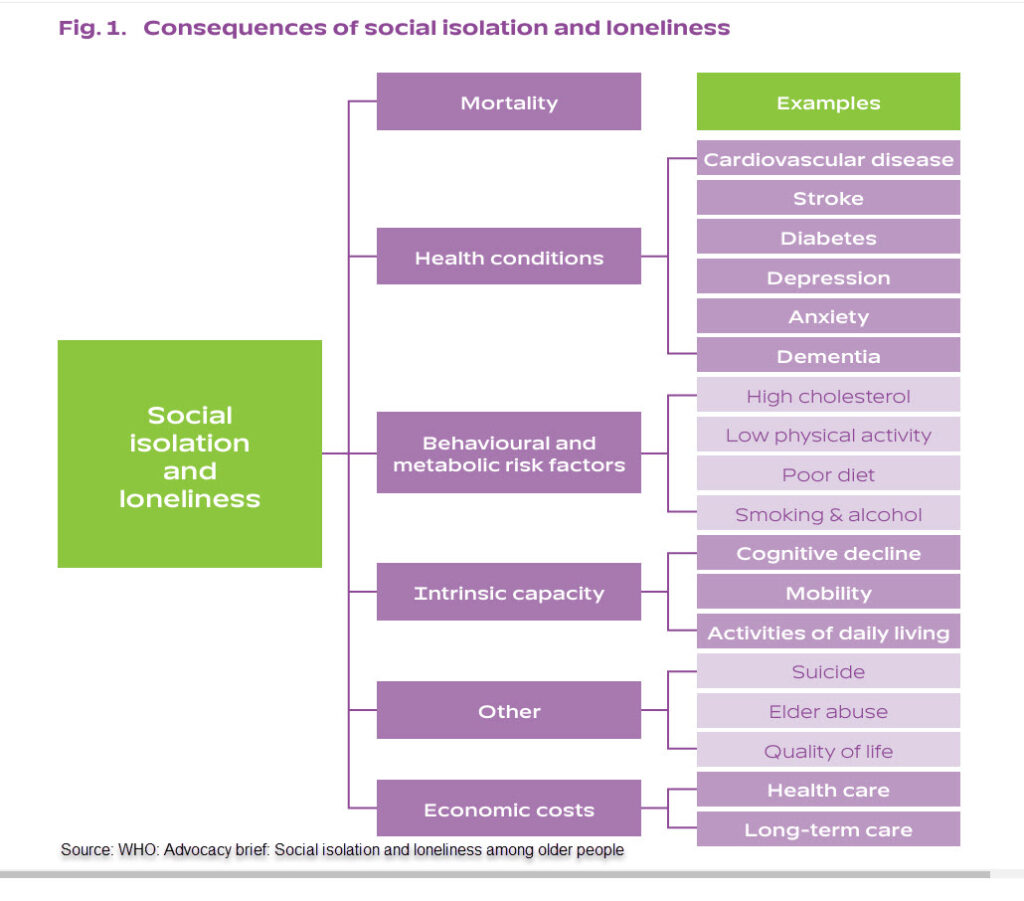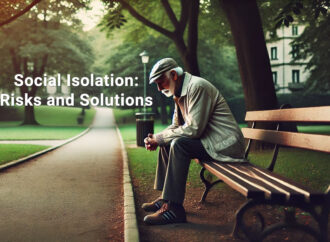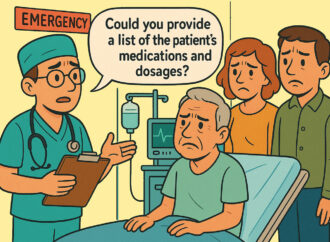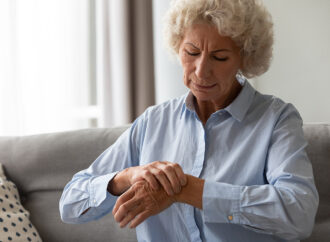Are you bored and lonely with nothing to do? Although you may be sitting alone, you have plenty of company. Senior loneliness and social isolation are increasingly common and serious risks. The profound effect they have on health, mental health and general well-being makes loneliness and isolation pressing issues.
According to a World Health Organization advocacy brief, 25–29% of older people in the United States report being lonely. Other studies report even higher percentages. One survey of seniors 65 and older conducted by an insurance provider found that 57% of older adults feel lonely. The problem isn’t confined to the United States, either. WHO says that social isolation and loneliness are widespread among older people in most regions of the world.
Risks of Social Isolation and Loneliness on Seniors
Loneliness and social isolation are concerning because of the serious effects the two conditions have on your mental and physical health and their impact on your quality of life.
According to an advisory from the Surgeon General’s office, “The mortality impact of being socially disconnected is similar to that caused by smoking up to 15 cigarettes a day, and even greater than that associated with obesity and physical inactivity.”
The National Institute on Aging points out that social isolation and loneliness in adults are associated with these health conditions:
- Physical Health Risks: Increased risks of heart disease, stroke, and type 2 diabetes. A weakened immune system and increased inflammation can lead to conditions like Alzheimer’s (National Institute on Aging) (CDC).
- Mental Health Impacts: Higher rates of depression, anxiety, and suicidal thoughts. Loneliness can lead to cognitive decline and increased rates of dementia (National Institute on Aging) (AAFP).
This infographic from the World Health Organization (WHO) illustrates the impact of social isolation and being lonely:

(Source: https://iris.who.int/bitstream/handle/10665/343206/9789240030749-eng.pdf)
These medical problems carry a hefty price tag. It’s estimated that the impact of social isolation results in a staggering $6.7 billion in excess Medicare spending annually. In the Surgeon General’s Advisory, Our Epidemic of Loneliness and Isolation, the U.S. Department of Health and Human Services says that cost is largely due to increased hospital and nursing facility spending.
What Causes Senior Loneliness and Social Isolation?
The causes of social isolation and loneliness in older adults stem from various factors that impact the lives of seniors. Among the most common are:
- Loss of Spouse or Friends: As people age, the death of a spouse, divorce, or loss of close friends can lead to a profound feeling of loneliness and a decrease in social interactions. This can be particularly hard for those who choose to age in place. Friends may stop calling you, or you may stop calling them to go out to dinners, concerts, movies, or other events. The grieving process and adjusting to life without a loved one or close friend can significantly impact a senior’s emotional well-being.
- Retirement and Loss of Daily Social Interactions: Retirement often means losing the daily social interactions that come with a work environment. The overnight change from daily interaction and responsibilities to having “nothing to do” can leave you feeling disconnected and isolated – especially if you don’t have a spouse or partner. It may leave you struggling – or at a loss – to find new social outlets.
- Mobility Issues and Health Problems: Physical limitations, chronic illnesses, and disabilities can make it difficult to engage in social activities and maintain relationships.
- Inadequate Transportation: Not having accessible and reliable transportation available can prevent you or your loved ones from attending social events, visiting friends and family, and participating in community activities. The inability to drive can further exacerbate this issue, leaving seniors homebound.
- Children and Family Living Far Away: When your family lives far away families it can be difficult to maintain close relationships with your children and grandchildren. Infrequent visits and limited physical contact can add to your feelings of isolation and loneliness.
- Unsafe Neighborhoods and Lack of Community Spaces: Living in neighborhoods that are perceived as unsafe can discourage seniors from going outside and engaging with their community. Communities that don’t have senior-friendly spaces, such as parks, community centers, and social clubs, limit the opportunities for seniors to connect and interact with other people.
- Fear and anxiety: There are many people (seniors and younger adults) who are still self-isolating themselves to avoid getting Covid19 or other illnesses. In some cases (transplant patients, for instance), physicians do require patients to isolate themselves for a certain amount of time.
But for some people, it’s not a doctor’s recommendation that’s keeping them isolated. It’s fear and anxiety that they might get a serious illness. If you’re one of them, ask your doctors if isolation is still necessary. And if it’s not, ask for their recommendations on overcoming your anxiety.
Solutions to Combat Social Isolation and Loneliness
Aging and loneliness don’t have to go hand-in-hand. The way to combat your feelings of isolation and loneliness is to be proactive. If you sit there and do nothing, nothing will happen. You have way more living to do. So, here are several effective strategies to ease loneliness and isolation.
Exercise Regularly
Being physically active helps maintain and build your strength, improve balance, and prevent falls. It can also make you feel energized and lift your mood. Simple activities like walking, yoga, Tai Chi, or joining fitness classes are all beneficial – and you might meet some new friends in the groups you join.
Ask your physician to recommend local groups. Check with your Supplemental Medicare Insurance plan to see if they offer a free membership to gyms near you or give you access to exercise classes. Libraries and community centers are other places to check for free or low-cost exercise classes.
Take up a Hobby or Two
Now is the time to pursue all those hobbies and interests you didn’t have time to do when you were younger. Gardening, art, crafting, or playing a musical instrument can give you a sense of purpose and joy. Joining clubs or groups centered around your interests can help you meet like-minded individuals and build friendships. You may be able to use your hobby to being in a little extra money by selling items they’ve created, or by teaching their skills to others.
Use Technology to Connect with Others
If you’re not already using a smart phone, tablet, or computer to communicate with other people, learn how to do so. Video calls, social media interactions, and online communities can bridge the gap and reduce feelings of isolation.
Technology devices really aren’t as complicated as they seem. The “secret” to learning to use tech devices is to learn how to do one thing at a time on a device. If you have trouble, look for beginner’s classes at your library, through adult education programs, or at the store where you purchased a device.
You can ask your family to set up certain functions for you, too. But ask them to write out the steps – including any passwords they may have set up for you – so you can refer to the information when they aren’t present.
Learning to use technology is increasingly important for maintaining your independence, too. Everyone, from your appliance repair guy to your bank and your physicians, use technology to communicate with the people they serve. If you know how to use the technology others are using, you won’t have to depend on a friend or a relative to make appointments or get messages.
Join Social Groups and Community Activities
Step out of your comfort zone and participate in local clubs, religious groups, or community center activities. If you don’t know anyone in the group, walk up to a couple of people and introduce yourself. Say something like, “I’m new here. Can you tell me a little about this group?”
Another way to connect with others and give yourself a sense of purpose is to volunteer. Museums, local food banks, and religious organizations are just a few of the places that welcome volunteers.
Discover Resources for Meeting Others
There are many resources that can help you become more connected and engaged with other people. This list of resources to use to overcome loneliness will help.
How to Help Senior Friends and Relatives
If you have a senior parent, other relative or friend who is struggling with being alone, there are things you can do to help lift their spirits and be more connected and socially active.
Schedule Regular Visits and Phone Calls
Scheduling regular visits and phone calls with parents and grandparents or other older family members or friends. Doing so can help maintain strong emotional connections and provide support. Staying in touch regularly shows seniors (or others who are alone) that you care and are available. That can help reduce their feelings of abandonment.
Use Technology to Visit
If you live far away, arrange video calls on Zoom, FaceTime, or Alexa. Being able to see you as well as hear you brings you closer and helps everyone feel more connected.
Encourage Participation in Social Activities
Encourage senior family members to join social groups or participate in community events. Doing so can help them stay active and engaged. If they don’t know of any, do some research online to help them locate groups they may be interested in.
If they can’t get out, help them locate online groups or classes where they may find like-minded people to chat with and share experiences.
Arrange events you can go to together
If you live close enough, plan an outing with your older family members. It could be a trip to the zoo, a boat ride, a movie they’d like to see, or other activities you both enjoy. If you live far away, plan to visit in person as often as you can.
Help with Transportation to Social Events and Appointments
If possible, provide transportation or arrange for reliable transport services to help seniors to attend social events, medical appointments, and other activities.
Communities Can Help, Too
Like many areas, your town or county may have a growing number of seniors who feel alone and would like ways to interact with others. Encourage your town or county to help mitigate loneliness in older people by taking actions such as these:
Create Senior-Friendly Spaces and Activities
Develop safe, accessible parks, community centers, and recreational facilities where seniors can go to participate in social activities. Run organized events specifically for seniors, such as dance classes, art workshops, book clubs and other activities that can foster social connections. And publicize the events in local newspapers and on your website.
Offer Support Services Like Meal Delivery and Transportation
Community programs that provide meal delivery, transportation, and in-home care can help seniors maintain their independence and reduce isolation. These services ensure that seniors’ basic needs are met, allowing them to focus on social interactions and activities.
Promote Volunteer Opportunities for Seniors
Encouraging seniors to volunteer in their community can provide a sense of purpose and opportunities to meet new people. Volunteering can also help seniors stay active, engaged, and mentally stimulated.
The Critical Importance of Taking Action
The importance of dealing with senior loneliness and social isolation can’t be overstated. These conditions are linked to severe mental and physical health outcomes, including depression, cognitive decline, and increased mortality.
By understanding and combating these issues, seniors, their families, and their communities take the steps needed to improve the quality of life, and foster healthier, more connected communities.
FAQS
What’s the Difference between Loneliness and Social Isolation?
Loneliness and isolation are related, but not the same.
Senior loneliness refers to the subjective feeling of being alone or disconnected, regardless of the actual level of social contact. It is a pervasive sense of emptiness or lack of companionship.
Social isolation, on the other hand, is an objective measure characterized by the absence of social interactions, community engagement, or close relationships. While the two terms are related, they are not synonymous; a person can feel lonely even in the presence of others or be isolated without feeling lonely.
But both conditions have a negative impact on your health and well-being.
How do loneliness and social isolation impact the quality of life of seniors?
The two related conditions can impact seniors in these ways:
Mental Health Impact
- Depression and Anxiety:
- Loneliness often leads to feelings of sadness and hopelessness, which can develop into chronic depression.
- Social isolation can increase anxiety levels, leading to a constant state of worry and unease.
- Cognitive Decline:
- Engaging in regular social interactions stimulates the brain, helping to maintain cognitive function.
- Isolation can contribute to memory loss and an increased risk of developing dementia and Alzheimer’s disease.
- Emotional Well-being:
- A lack of companionship can lead to feelings of worthlessness and low self-esteem.
- Social interactions provide emotional support, helping to manage stress and improve overall mood.
Physical Health Impact
- Chronic Illnesses:
- Loneliness and isolation are linked to higher risks of developing chronic conditions such as heart disease, hypertension, and diabetes.
- The stress from loneliness can lead to inflammation, which is a risk factor for various illnesses.
- Weakened Immune System:
- Socially isolated individuals tend to have weaker immune responses, making them more susceptible to infections and illnesses.
- Loneliness can lead to poor health behaviors, such as neglecting exercise and unhealthy eating, further compromising immune function.
- Increased Mortality Risk:
- Studies have shown that loneliness and social isolation can significantly increase the risk of premature death.
- The impact of isolation on physical and mental health contributes to a higher likelihood of mortality.
Social and Economic Impact
- Healthcare Strain:
- Seniors experiencing loneliness and isolation often require more medical attention and hospitalization, straining healthcare resources.
- Preventive measures and early intervention can reduce the burden on healthcare systems.
- Caregiving Needs:
- Socially isolated seniors may require more support and caregiving services, impacting families and communities.
- Encouraging social engagement can reduce the need for extensive caregiving.
Isolation and loneliness are difficult for older people and have negative effects on their lives. But by using some of the steps we’ve outlined above, seniors, their families and their communities can all work to help seniors and others who are physically alone become more connected socially.
Image source: Man on a bench image was created by Dall-e
Disclaimer: The information on this website is provided for informational purposes only and should not be considered as legal, tax, accounting, or medical advice. Please consult a licensed professional for help with any specific questions and issues you may have.














Leave a Comment
Your email address will not be published. Required fields are marked with *